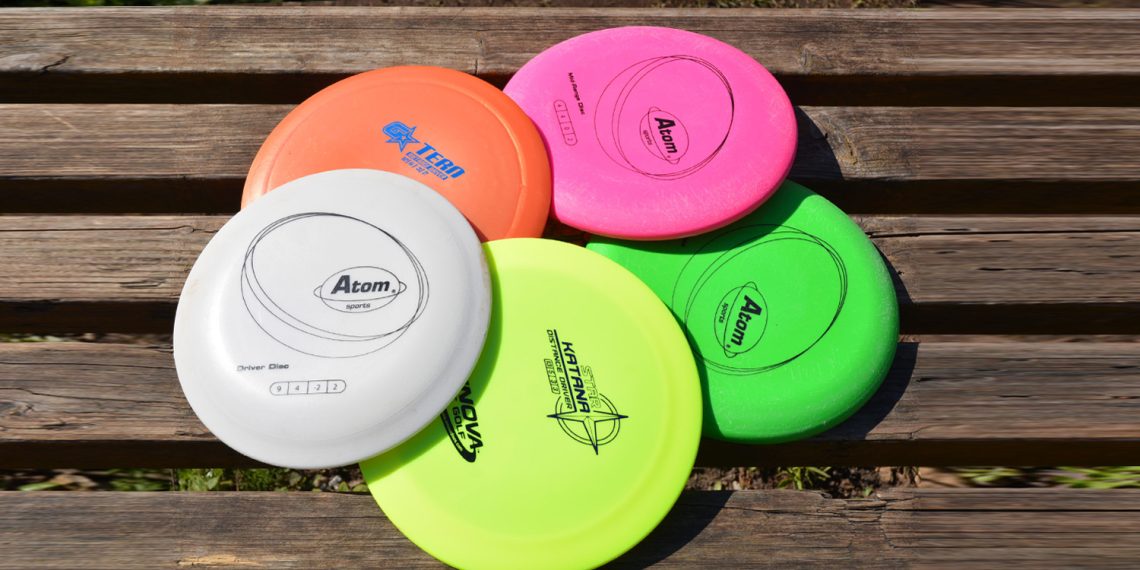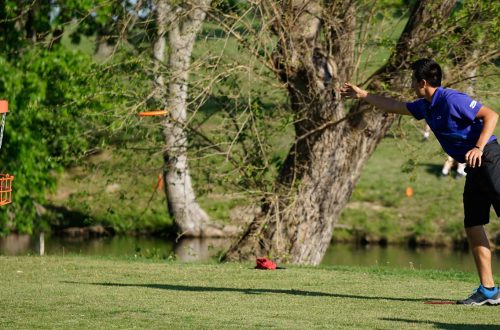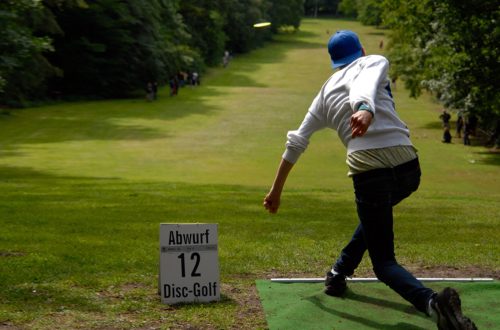Disc golf has exploded in popularity over the past decade, with courses popping up in parks across the country. If you’re new to disc golf, one of the most important things is choosing the right discs for your game. Having the proper discs tailored to your skill level and needs is crucial for success on the course. This beginner’s guide will walk you through the key factors in choosing disc golf discs as a new player.
Disc Types: Drivers, Midranges, and Putters
There are three main types of disc golf discs: drivers, midranges, and putters. Each serves a different purpose and has distinct characteristics.
Drivers
Drivers are the discs used for long distance shots. They have a sharp rim and more angular edge, allowing them to cut through the air at high speeds. Drivers come in different variations – distance drivers have a wide, blunt rim for maximum air resistance, while fairway drivers have a thinner rim for more control. As a beginner, it’s best to start with fairway drivers as they are easier to control. Popular fairway driver models include the Innova Leopard, Discraft Stalker, and Dynamic Discs Escape.
Midranges
Midrange discs are all-purpose discs good for both short and medium-range shots. The rim is less pronounced than drivers, providing a nice balance of speed, glide, and accuracy. Midranges are a versatile option great for approach shots, short drives, and tricky holes requiring an S-curve. Some top midranges are the Discraft Buzzz, Innova Roc3, and Westside Discs Warship.
Putters
Putters are designed purely for short shots, close-range approaches, and putting. They have a totally blunt rim and limited air resistance, allowing for smooth, predictable flight at low speeds. There are two main putter styles – beaded and beadless. Beaded putters have a protruding ring around the rim while beadless putters have a smooth, rounded rim. Popular models include the Dynamic Discs Judge, Innova Aviar, and Gateway Wizard.
Plastic Types
Discs come in a variety of plastic types that impact their feel and flight characteristics. For beginners, baseline plastic is recommended. These plastics are more affordable and beat-in quicker, allowing you to cycle new discs as your arm speed increases. Common baseline plastics include Innova DX, Discraft Pro-D, and Dynamic Discs Prime. Stay away from slick premium plastics like champion, z, or lucid until you develop proper throwing form.
Weight
Heavier discs require more power to fly correctly while lighter discs are easier to throw for distance. For beginners, lighter discs in the 150-165g range are ideal. As your skills progress, you can move up to max weight discs around 175g. Keep in mind lighter putters like 150g can be advantageous for keeping putts online in windy conditions.
Stability
Stability indicates how resistant a disc is to turning over from its intended flight path. Discs range from understable (easy to turn right for righties) to overstable (strong fade left). For newer players, choosing neutral and understable discs is key, as they are less prone to dramatic fading that can lead to frustration. Avoid extremely overstable models until your form is refined.
Building Your Beginner Bag
When starting out, you don’t need a huge arsenal of discs. Start with 2-3 models for each disc type and work your way up from there. Here is a sample beginner bag:
- Drivers: Leopard, Valkyrie, Sidewinder
- Midranges: Buzzz, Roc3, Mako3
- Putters: Aviar, Judge, Wizard
Having options like understable and neutral drivers gives you versatility for both backhands and forehands. Focus on each disc’s flight shape and learn how to control angles. As your skills improve, you can fill out your bag with more molds and plastics.
Choosing Discs for Different Shots
| Shot Type | Recommended Discs |
|---|---|
| Straight Tunnel Shots | Neutral/understable fairway drivers like Leopards, Sidewinders, Roadrunners. Neutral midranges like Mako3, Buzzz SS, Fuse. Light/glidey putters. |
| Hyzer Flips | Understable distance drivers like Beasts, CD2s, lighter Valkyries/Sidewinders. |
| Strong Left Finishing Shots | Overstable drivers like Firebirds, Felons, Whippets. Beefy midranges like Gator3s, Verdicts, Wasps. |
| Forehand Drives | Heavy overstable drivers like Force, Thrasher, Nukes. Overstable midranges like Malta, Justice. |
| Rollers | Understable distance drivers like Roadrunners and Sidewinders. Understable midranges like Fuse, Mako3, Comet. |
Windy Conditions: Adjusting Your Disc Choices
| Wind Condition | Recommended Discs |
|---|---|
| Headwinds | Heavier, overstable distance drivers like Destroyers, Forces, Nukes. Midranges better than light drivers. |
| Tailwinds | Understable and lighter drivers for added glide, like Roadrunners and Sidewinders. Beware turnover issues. |
| Crosswinds | Overstable discs avoid movement. More overstable than normal hyzers. Putters handle better than drivers. |
| Headwind Putting | Lighter putters around 150g. Lower profile putters. Give putts height to fight wind. |
Final Tips
Choosing disc golf discs can seem overwhelming at first, but following these basic guidelines will set you up for success as a beginner:
- Start with understable fairway drivers, neutral midranges, and neutral/beaded putters
- Focus on baseline plastics around 165-175g for newer players
- Practice proper throwing form and technique extensively before moving up in disc speed and stability
- Fill out your bag with discs that cover straight shots, right fading shots, left fade shots, rollers, and utility discs
- Adjust your disc choices based on the predominant wind conditions
On the whole, the most important thing is to pick discs appropriate for your current skill level. Try out different molds to understand how they fly. Don’t get caught up seeking distance before refining your technique. With practice and the right disc selection, you’ll be parking holes in no time. Now grab your discs and let’s hit the course!





